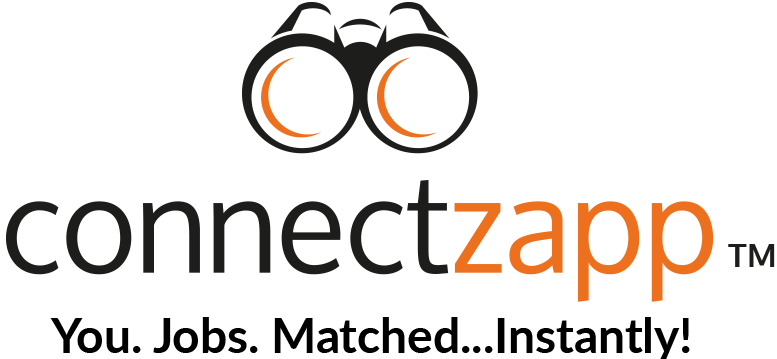5 easy ways to make your talent acquisition and new employee onboarding more effective

5 Easy Ways To Make Your Talent Acquisition
and New Employee Onboarding More Effective
Talent Acquisition
The definition of talent acquisition is the process of recruiting, tracking and interviewing candidates, then hiring, onboarding and training new employees.
It’s a function of the Human Resources (HR) department in larger organisations. In smaller organisations it can be performed by the business owner, CFO or a manager.
The talent acquisition process of an organisation can include software, either standalone or off the shelf to help automate the process and store candidate details and other data. It can also include physical processes such as interview and training techniques. Employee compensation and performance evaluation can also be part of the process.
The process an organisation uses is often viewed as a strategic approach to sourcing and hiring the best employees. An effective talent acquisition process also helps with employee performance and tenure.
The Importance Of Effective Talent Acquisition

The quality of talent within an organization has a direct impact on how effective it is in delivering its product or service and how competitive against competitors.
An organisation’s employees directly affect its future success, so it is important, in fact essential to have an effective talent acquisition strategy.
Talent acquisition is forward thinking. Instead of just hiring a new employee to fill a current job vacancy, as part of an organisation’s talent acquisition strategy the talent acquisition team can consider what the potential employee’s path could be within the organisation. This ensures the organisation strategically hires long term employees who could become managers or senior managers who then contribute to the success of the organisation.
This means talent acquisition about creating and following a long term plan for the future of jobs within the organisation.
An effective talent acquisition strategy also decreases the risk to the business of bad hires which saves time, money and potential disruption a bad hire can make on the culture and productivity of teams.
Looking for talent?
The 5 Steps For Effective Talent Acquisition

Talent acquisition comprises of these 5 steps:
- Lead generation and sourcing talent
- Interviews and assessment
- Reference checking
- Making offers and hiring
- Onboarding and training
1. Lead Generation and Sourcing Talent
Job boards are not the only places to source talent. Other sources include existing employees, recruiters, referrals, networking events and academic programs. Some companies find poaching competitor’s staff a good source of talent.
Connectzapp is a source of high quality candidates.
When sourcing talent, keep these 3 things in mind:
- Your Brand – it says a lot about your organisation and can help or hinder your ability to attract the best people. A professional and well executed recruitment process can elevate your brand and assist in making your organisation a sought after place to work.
- Detailed Job Description – this is not just the job requirements and duties. Your job description should also include the qualities you are looking for in a candidate. This increases the likelihood you will attract the right person.
- Candidate Sources – recruitment is a marketing exercise and like any marketing exercise, your efforts should be directed to where the target market is. Before you start advertising for a role, ask yourself where the best candidates are most likely to be, then focus your efforts there.
Data analytics is an important part of sourcing the best talent. By tracking marketing efforts, response rates and the quality of applications, you can fine tune your recruitment process so it is focused in the right areas and optimised to attract the best talent.
Talent acquisition programs and software programs that screen applications and track candidates are a useful and necessary tool, however they can’t replace the judgement of a hiring manager. Digital tools should be used to save time however users should understand and carefully consider their limitations to ensure the best candidates are not overlooked.
2. Candidate Interviews and Assessment

Any candidate needs to be considered for their key assessment aspects:
- Skills – do they have the skills for the job? Can they be trained for the role and develop the skills within an appropriate time frame the role requires.
- Experience – Do they have the experience for the role? Is experience required, or are other candidate attributes more important than direct or similar experience?
- Salary – what is an appropriate salary for the role? What is an appropriate salary for this candidate? Does it fit the budget?
- Culture fit – workplace harmony is important, particularly in a team environment. A wrong hire can cost the organisation time and money. Will this candidate fit into the team and enhance it?
The questions you ask a candidate can depend on the role. Some common questions are:
- What are your key achievements in previous roles?
- What is an instance where you failed? What did you do?
- How have you been a valuable team player?
- What is an example of where you went out of your way to do something extraordinary?
3. Reference Checks
Reference checking previous job performance is an important step to ensure against hiring mistakes. The usual checking of references can work, however what you are told by a referee is not always accurate. For example:
- Current or past employer ulterior motives – a previous employer may not be accurate when asked for a reference because they don’t want the person to leave their organisation, or they may be a difficult employer to work for.
- Recruiter ulterior motives – when a candidate is looking likely to be placed with an employer, other recruiters will sometimes talk the candidate down to the employer. This is to change the employer’s mind, which then gives other recruiters the opportunity to place the candidate and receive the fee.
In assessing a candidate there are 5 questions that give a clearer picture of their past performance and likely performance on the job. These questions can give you a clearer indication of the candidate’s potential on the job performance and how well they are likely to fit in culturally.
The 5 questions are:
- In your past jobs, would you say you were a high, medium or low performer? The answer to this question gives you an indication of the candidate’s probable performance. Most people will answer honestly, however few will state they were a low performer.
- In your previous roles, what challenges did you face to perform better? If the candidate blames outside factors for low performance, is their blame justified or are they simply finger pointing to deflect lack of performance?
- What support do you require for high performance? This is another question that gives you an indication of how the candidate takes responsibility for their performance. Are they a needy person who needs direction? Or do they run a solo race?
- What were some of the qualities that made your peers stand out on their performance? The ability for the candidates to recognise the better qualities in others shows the qualities they may need to work on.
- How often do you reach out to seniors, peers or juniors for feedback? Feedback is always good to have. Importantly, when a candidate shows they have asked juniors and subordinates for feedback, they’re showing their ability to take and act on potential criticism from lower ranked team members.
4. Making Offers & Hiring
There are 5 steps to successfully making an offer to a candidate:
- Make the offer quickly – good quality candidates can have multiple options for employment. By making an offer quickly you can secure a good candidate, rather than them being employed by a competitor
- Agree on salary and benefits – This can become a roadblock to employing the right candidate, so consider your minimum maximum band for the role. Then by getting agreement early, it removes a potential barrier to employing the right person
- Letter of offer – this should be a short document that contains a summary of the agreement between parties and conditions of employment. It should contain:
- Position and job title
- Start date
- Hours of work
- Pay and other entitlements
- The terms of any probationary period
- Termination of employment and notice periods
- Be ready for a counter offer – particularly if their current employer doesn’t want to lose them or the candidate has interest from other employers.
- Set a time frame for a decision – no one wants to be strung along. By setting a time frame for a decision, usually 24-48 hours, both parties can agree to accept or decline an offer within a given time frame
5. Onboarding & Training - New Employee Onboarding

Successful employee training and development which includes effectively onboarding new hires, can lead to better outcomes for both employee and employer.
A common mistake is to leave new hires to learn on the job. While this can sometimes be effective training for new hires, properly onboarding and training new recruits means happier employees, higher employee productivity and increased employee tenure. This increases a company’s productivity and customer satisfaction. It also reduces costs because finding, hiring and training new staff costs money. When employees are more effective and stay longer, there is less need to find new people.
In the USA around 20% of workers leave their new job within 45 days of being hired. According to estimates the cost of replacing an employee is between 16% to 20% of their salary, so it is good business for employers to keep staff once hired.
When part of an efficient onboarding process, around 91% of employees stay for at least a year and around 70% stay for 3 years or more when a company has a well structured onboarding process.
This means that an effective process for new employee onboarding and current employee development is a cost saving investment for an employer. It also makes for a positive company culture!
The onboarding process will differ between employers, depending on the company, the role and the industry the company is in, however all onboarding processes should contain most of the following:
- Establish and document new employee procedures – this should be done prior to any candidate search, and should include:
- Identifying tasks or procedures employees need to know
- Identifying the best person to complete the training
- Allocation of resources – supplies, equipment and time
- Training – from online and microlearning to hands on practice
- Checking for understanding – are the people being trained absorbing their training?
- Establish a new hire training checklist – This should include:
- Sending a welcome email that includes info such as expected dress code and parking availability
- Ensuring office space is cleared, stocked and ready
- Pairing new employees with a mentor
- Developing an individual training plan
- Identifying priority topics employees need training on
- Planning check-in meetings to help employees feel supported
- Start onboarding early – the recruitment process should be the first part of the onboarding process
- Onboarding best practices – should be part of the process, and these should include:
- Designing and delivering a memorable first day, tailored to an employee’s needs
- Using variable learning methods to sustain employee attention and aid in absorption of what is being taught
- Plenty of time for questions and dialogue
- Train for culture – not just topics. A video message from the company CEO about company values, goals and aspirations is a great way to do this
- Build in regular reviews – to show new employees they are supported and valued. Regular reviews also give you the opportunity to make adjustments to your training program
Summary
Talent acquisition and new employee onboarding is a vital part of building an effective organisation. More than just creating a job description then running some ads, employee training and development is a constant process which, when done effectively lowers recruitment costs and increases employee tenure. Most importantly, it creates a happy and productive workplace!
Find the best employee for any role via Connectzapp
Or
Find the best job or highest paying job for you




